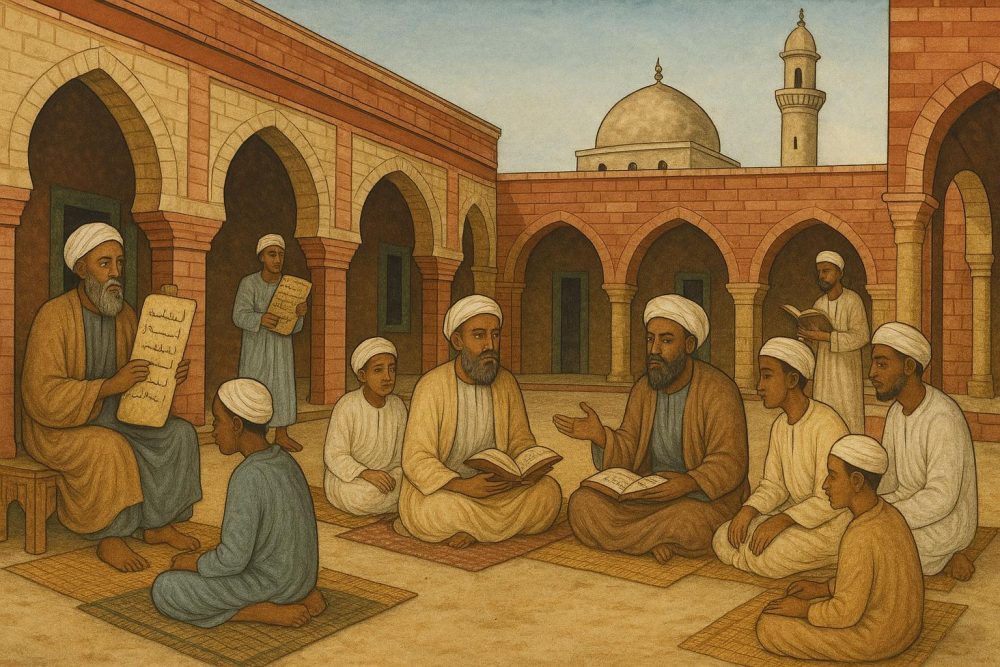
Introduction to Traditional Islamic Schools
In pre-colonial Somaliland, education played a fundamental role in societal development, with a strong inclination towards Islamic teachings. The region was part of a larger Islamic culture that thrived across the Horn of Africa. Predominantly, education was imparted through madrasa (Arabic for “school”), traditional Islamic schools which were central to learning and community life.
Historical Context
The Islamic educational system in pre-colonial Somaliland was deeply rooted in the region’s conversion to Islam around the 7th century. This period marked the introduction of Islamic culture, including its educational practices. The madrasas facilitated not only religious education but also the dissemination of Arabic, which was integral for reading the Quran and understanding Islamic jurisprudence. The incorporation of Islam into daily life also meant that learning often started at a very early age, with children beginning their education as soon as they could speak.
As Islam became the dominant social and cultural force, madrasas transformed into significant institutions for not only religious but also civic education. They operated under the guidance of local religious and community leaders, ensuring that the educational system was closely aligned with the spiritual and moral needs of the community.
Structure and Curriculum
Traditional madrasas were typically located within villages or towns, often attached to mosques, serving as both spiritual and educational centers. This proximity to religious practice emphasized the integration of faith and learning, making education an essential part of religious life. The curriculum was primarily religious, focusing on memorization and recitation of the Quran. Pupils also studied Hadith (sayings and actions of the Prophet Muhammad), fiqh (Islamic jurisprudence), and Arabic grammar.
Teaching methods involved oral instruction, with students sitting in a circle around the Imam or teacher. This environment fostered a strong sense of community and a direct transmission of knowledge. The education was highly personalized, adapting to the pace and ability of individual students. This method ensured that each student’s educational journey was uniquely catered to their learning abilities, which was particularly vital in an era and area lacking standardized educational resources.
Alongside religious subjects, curricula sometimes included other areas of knowledge such as mathematics, astronomy, and medicine, contributing to a well-rounded education. This diversity in educational content enabled students to become well-informed individuals capable of contributing to various aspects of their society.
Role of Scholars and Teachers
Islamic scholars and teachers enjoyed significant respect within these communities, often doubling as religious leaders who provided spiritual guidance and adjudicated in legal matters. Their role went beyond academia, as they were seen as custodians of tradition and community morals. Such positions were not merely educational but also held socially authoritative standing, bridging the gap between learning and governance.
Due to the stringent focus on religious studies, scholars who achieved significant expertise were often invited to teach in other regions, therefore facilitating cultural and intellectual exchange across different parts of the Islamic world. These scholars were viewed as beacons of knowledge, tasked with preserving and disseminating religious and cultural tenets. Often, they would serve as advisors to ruling elites and were instrumental in shaping policies based on Islamic principles, thus wielding significant influence over societal direction.
Social Impact
These traditional Islamic schools were pivotal in promoting literacy and education among the local population. Access to these schools signified a commitment to Islamic values and a structured way of life. For many, the madrasas became gateways to further education and scholarly pursuits, especially in centers like Harar or across the sea in the Arabian Peninsula.
The education received was not solely religious but deeply intertwined with the societal values and norms, thus helping to reinforce a cohesive identity among the region’s inhabitants. The graduates of these schools often held positions of authority in local governance or religious institutions, thereby perpetuating the influence of Islamic education in public life.
Moreover, the presence of these schools helped embed a strong Islamic identity that significantly influenced cultural, social, and political developments in the region, many effects of which are visible even today. The lasting legacy of these schools can be seen in the enduring respect for education and scholarship within Somaliland, as well as in the broader cultural cohesiveness and adherence to Islamic principles that define much of the region’s socio-political landscape.
For more detailed insights into Islamic education in the Horn of Africa, you can explore related scholarly resources and educational archives here.